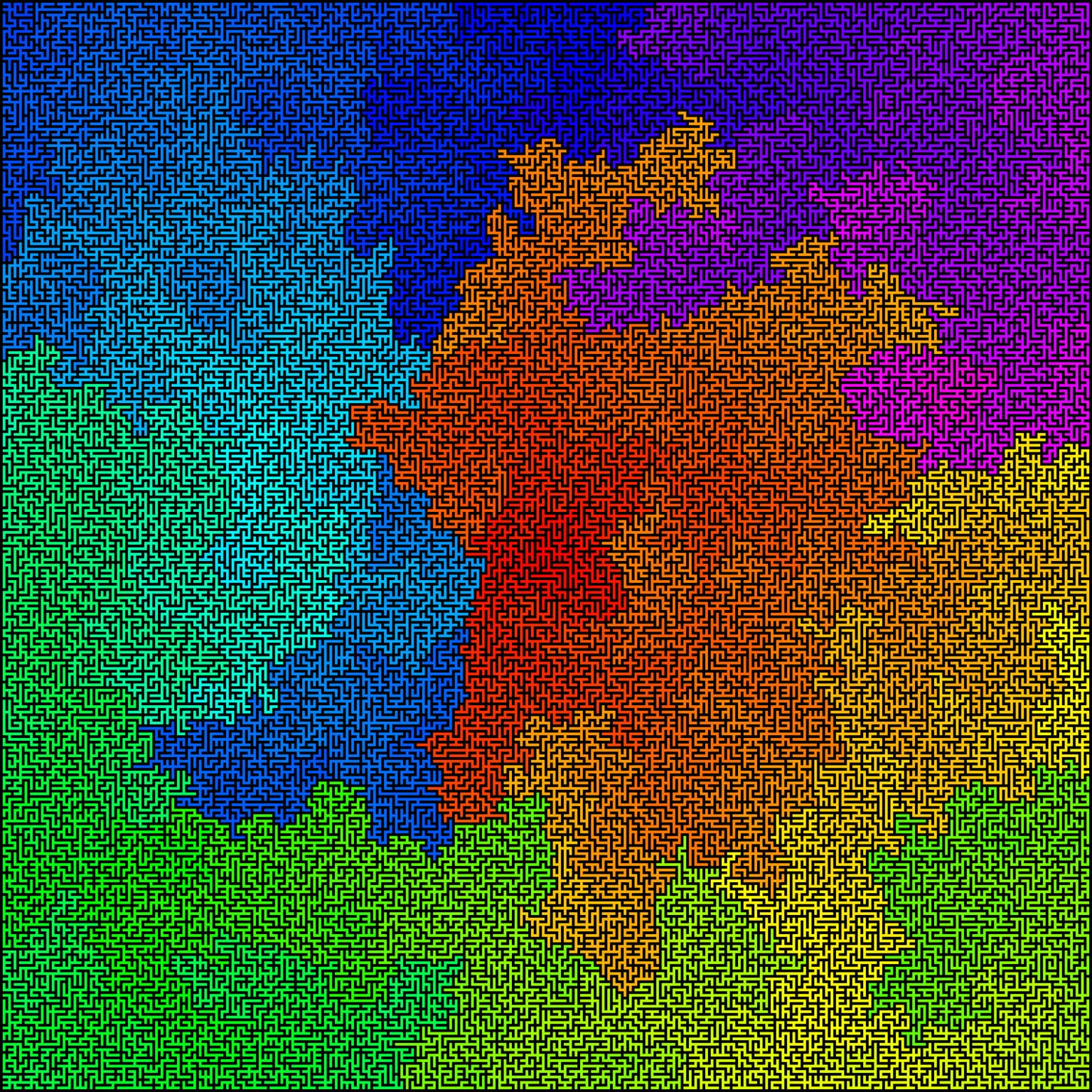Artists
Cruz Godar
Graduate Student
Mathematics Department, University of Oregon
Eugene, Oregon, USA
Statement
My first two college courses were in the departments of math and computer science, and since then, I’ve been fascinated by where the two subjects meet. Over the past few years, I’ve written dozens of web applets for creating and exploring fractals and similar objects, and eventually I developed a JavaScript library to streamline the process for myself and others. The kind of generative art these applets produce is a great way to counter the stereotypical presentation of math as a completely obscure subject, and my hope is for them to be both useful to mathematicians and appreciable by anyone, mathematician or not.
Artworks

Ever tried to make a maze? It’s not as easy as you might expect. Even a small one is tricky to make, and so a massive one seems downright impossible. But pick up any puzzle book and you’ll see pages of them — how do they do it?
Enter Wilson’s algorithm. Pick a random point, start from another point, and make a path by moving randomly, erasing any loops you happen to make, until you reach the first point. Then pick a new point and do the same until you hit the first path you drew. Once every point is covered, you'll have a maze ready to go. This one is colored by shortest distance from the center, so while differently-colored regions may appear close, the shortest paths connecting the two have to travel through every color in between.

The double pendulum is one of the most common examples of a chaotic system: one so incredibly sensitive to initial conditions that any different two will eventually diverge from one another after long enough. Every pixel in this image corresponds to a different starting configuration — the x-coordinate determines the angle of the top part of the pendulum and the y-coordinate the angle of the bottom part. We start them all at the same time and color the pixel depending on both angles; after just a few seconds, the state space already displays this much chaos. The white point in the center is the equilibrium of a pendulum hanging straight down, while the corners all represent the highly unstable equilibrium of one balancing straight upward.